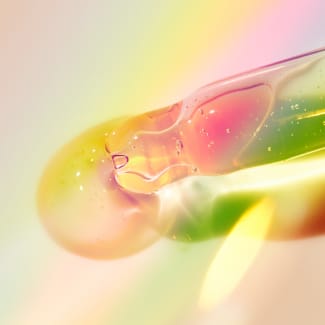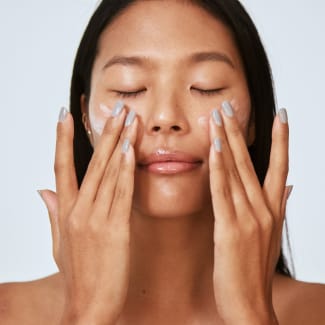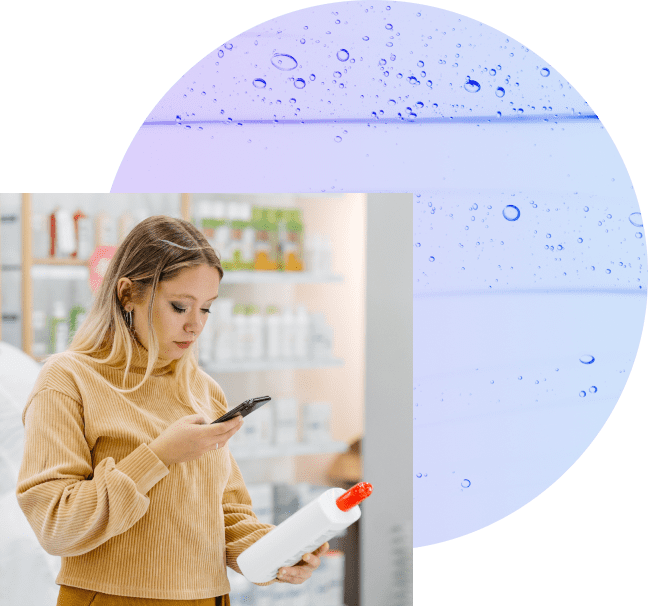Data: Fair
Fd&C Red No. 4 (Ci 14700)
Other Concerns
Enhanced skin absorption, Use restrictions (high), and Endocrine disruption (low)SYNONYMS
Unacceptable
Unacceptable: EWG VERIFIED products cannot contain this ingredient
FD&C Red 4 is a synthetic dye produced from petroleum; this dye is FDA-approved for use in food, pharmaceuticals and cosmetics.
Common concerns
See how this product scores for common concerns.
-
LOWCancer
-
LOWAllergies & Immunotoxicity
-
LOWDevelopmental and Reproductive Toxicity
-
HIGHUse Restrictions
Ingredient concerns
- CONCERNS
- DATA SOURCES
Products with this Ingredient


| fragrance for men | 78 products |
| fragrance for women | 237 products |
| body spray | 68 products |
| moisturizer | 87 products |
| facial moisturizer/treatment | 72 products |
| toners/astringents | 15 products |
| shampoo | 95 products |
| styling gel/lotion | 17 products |
| bar soap | 87 products |
| body wash/cleanser | 144 products |
| hand cream | 14 products |
| nail treatment | 1 products |
| conditioner | 60 products |
| hair styling aid | 35 products |
| hair treatment/serum | 32 products |
| hair relaxer | 3 products |
| exfoliant/scrub | 102 products |
| bronzer/highlighter | 3 products |
| mask | 52 products |
| liquid hand soap | 197 products |
| bubble bath | 31 products |
| bath oil/salts/soak | 180 products |
| body firming lotion | 22 products |
| hair color and bleaching | 15 products |
| sunless tanning | 50 products |
| after shave | 7 products |
| facial cleanser | 31 products |
| anti-aging | 11 products |
| serums & essences | 39 products |
| lipstick | 14 products |
| makeup primer | 11 products |
| hand sanitizer | 27 products |
| daily use with SPF | 7 products |
| nail polish | 8 products |
| Fragrance Lotion or Cream | 1 products |
| hair-loss treatment | 2 products |
| body oil | 2 products |
| makeup remover | 2 products |
| shaving cream (men's) | 1 products |
| beard oil | 1 products |
| foot odor control | 2 products |
| foot cleansing | 1 products |
| baby bubble bath | 1 products |
| styling mousse/foam | 3 products |
| setting powder/spray | 9 products |
| around-eye cream | 5 products |
| shaving cream | 2 products |
| recreational sunscreen | 1 products |
| antiperspirant/deodorant (men's) | 3 products |
| antiperspirant/deodorant | 6 products |
| foot moisturizer | 3 products |
| lip balm | 3 products |
| blush | 4 products |
| Exfoliants | 2 products |
| cuticle treatment | 1 products |
| mouthwash | 1 products |
| Hair Styling Gel | 1 products |
| foundation | 1 products |
| Oils & Serums | 1 products |
Cancer


| CONCERN | REFERENCE |
|---|---|
| Not likely to be carcinogenic in humans | International Agency for Research on Cancer (IARC) |
| Not likely to be mutagenic in humans | Mutagenicity testing of some commonly used dyes(1981-10-01) |
| One or more in vitro tests on mammalian cells show positive mutation results | In vitro and in vivo indications of the carcinogenicity and toxicity of food dyes(1978-03-01) |
Endocrine disruption


| CONCERN | REFERENCE |
|---|---|
| Associated with endocrine disruption | National Toxicology Program (NTP) |
Informational


| CONCERN | REFERENCE |
|---|---|
| Industry or government recommendations for safe use: restrictions on concentration, impurities, product types, or manufacturing methods - Color additive not approved by FDA for use in food | US. Food and Drug Administration (FDA) |
| Industry or government recommendations for safe use: restrictions on concentration, impurities, product types, or manufacturing methods - Color additive approved by FDA for use in cosmetics: external use only | US. Food and Drug Administration (FDA) |
| Industry or government recommendations for safe use: restrictions on concentration, impurities, product types, or manufacturing methods - Color additive not approved by FDA for cosmetics used around eyes | US. Food and Drug Administration (FDA) |
| Industry or government recommendations for safe use: restrictions on concentration, impurities, product types, or manufacturing methods - hair dyes | EU Cosmetics Directive |
| Industry or government recommendations for safe use: restrictions on concentration, impurities, product types, or manufacturing methods - The substance was formerly approved as a food additive but is now banned; there may be some toxicology data available. | US. Food and Drug Administration (FDA) |
| Industry or government recommendations for safe use: restrictions on concentration, impurities, product types, or manufacturing methods - Color Additives - Batch Certified by the U.S. Food and Drug Administration | Personal Care Products Council |
Use restrictions


| CONCERN | REFERENCE |
|---|---|
| Violation of government restrictions - Restricted in cosmetics; use, concentration, or manufacturing restrictions - Color additive approved by FDA for use in cosmetics: external use only | US. Food and Drug Administration (FDA) |
| Violation of government restrictions - Restricted in cosmetics; use, concentration, or manufacturing restrictions - Color additive not approved by FDA for cosmetics used around eyes | US. Food and Drug Administration (FDA) |
| Violation of government restrictions - Banned or found unsafe for use in cosmetics | EU Cosmetics Directive |
| Violation of government restrictions - Restricted in cosmetics; use, concentration, or manufacturing restrictions - any | EU Cosmetics Directive |
Organ system toxicity (non-reproductive)


| CONCERN | REFERENCE |
|---|---|
| Classified as not expected to be potentially toxic or harmful | Environment Canada |
Persistence and bioaccumulation


| CONCERN | REFERENCE |
|---|---|
| Not suspected to be persistent | Environment Canada |
| Not suspected to be bioaccumulative | Environment Canada |
Ecotoxicology


| CONCERN | REFERENCE |
|---|---|
| Not suspected to be an environmental toxin | Environment Canada |
- International Agency for Research on Cancer (IARC)
- Mutagenicity testing of some commonly used dyes(1981-10-01)
- In vitro and in vivo indications of the carcinogenicity and toxicity of food dyes(1978-03-01)
- National Toxicology Program (NTP)
- US. Food and Drug Administration (FDA)
- EU Cosmetics Directive
- Personal Care Products Council
- Environment Canada
Understanding scores
Cosmetics and personal care products are not required to be tested for safety before being allowed on the market. The Skin Deep® scoring system was designed to help the public understand whether a product is safe to use or whether it contains ingredients of concern.
Every product and ingredient in Skin Deep gets a two-part score – one for hazard and one for data availability. The safest products score well by both measures, with a low hazard rating and a fair or better data availability rating.
HOW WE DETERMINE SCORES
Hazard score
The Skin Deep ingredient hazard score, from 1 to 10, reflects known and suspected hazards linked to the ingredients. The EWG Verified® mark means a product meets EWG’s strictest criteria for transparency and health.
Data availability
The Skin Deep data availability rating reflects the number of scientific studies about the product or ingredient in the published scientific literature.











